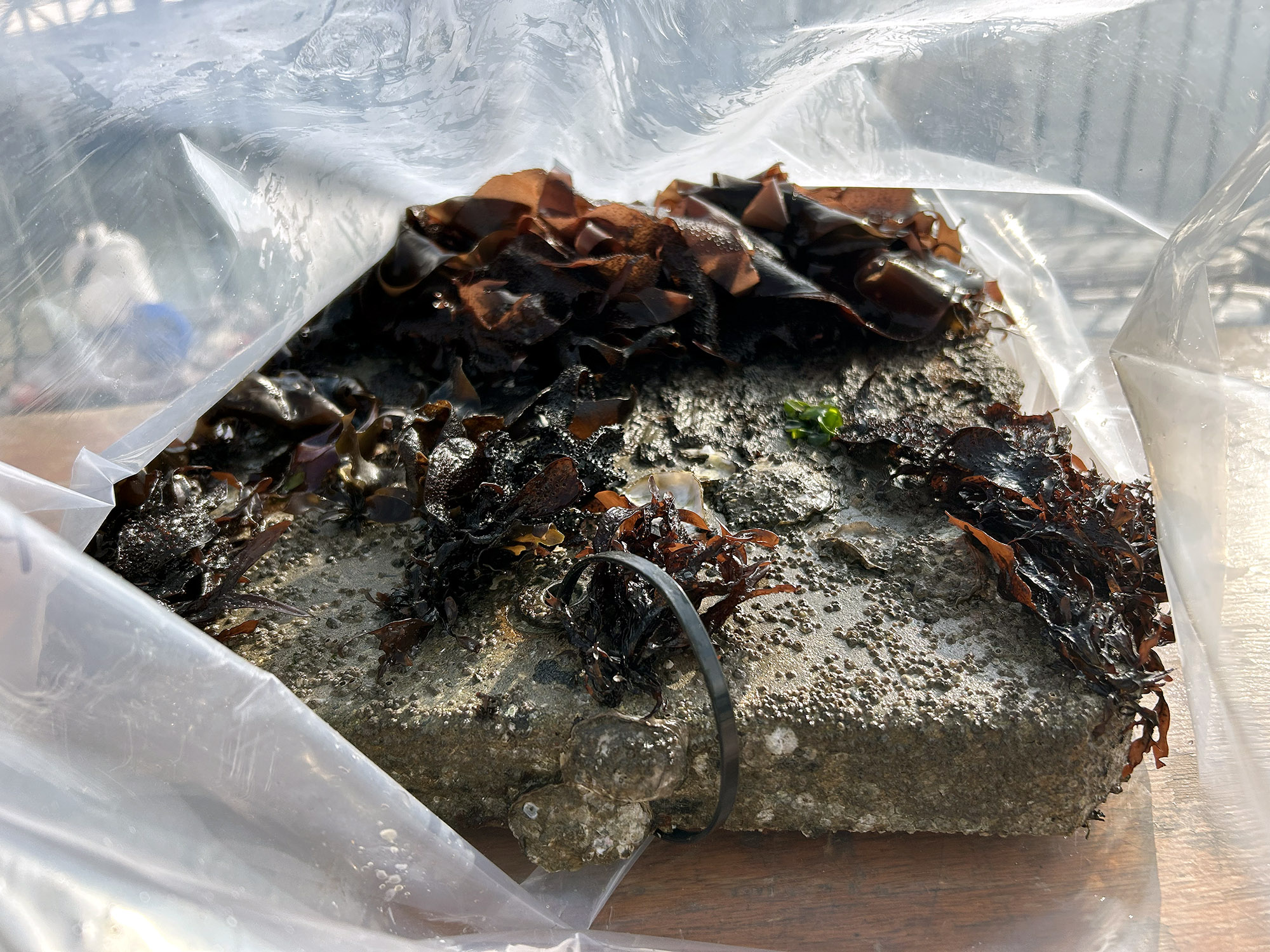
Oysters, Snails and a Wall That Protects Against Climate Change — 1 Tile at a Time
“We’ve seen an evolution of the community,” said Andrew Chang, a marine biologist with the Smithsonian. “There do appear to be a few more species that are on the more complex tiles, especially native Olympia oysters, which are a species of conservation concern in this area.”
Chang said they also found non-native species, which he expected “since this is the most invaded estuary in the world.”
The team gathered data along the Pier 45 breakwater, at the Agricultural Building seawall near Pier 14, as well as adjacent to the South Beach Harbor East breakwater.
Over the next year, they will produce a report to show the Port how it can incorporate their findings into its plan to rebuild much of the city’s 7.5-mile seawall.
“We’re interested in making the marine area around the city a better habitat than it currently is, particularly for native shore species, which would be here if this were a natural rock shoreline versus a seawall shoreline,” said Chela Zabin, a marine ecologist with the Smithsonian Environmental Research Center.

Zabin said she hopes to keep large tiles in the bay for at least two more years to gather more data, but said her organization is seeking funding to continue the work.
“It will cost a lot less to monitor them, but that will give us a better idea of the benefits of the textured tile and how that holds up over time,” Zabin said.
The Port of San Francisco anticipates completing its sea level rise feasibility plan by mid-next year, with construction slated to begin as early as 2028.
This plan will include measures to increase biodiversity in the bay, and this pilot project of counting species on tiles is just the beginning of San Francisco reshaping its shoreline for the water that’s yet to come.
“There’s absolutely no way in which sea level rise is not coming for San Francisco, and the ecology of the bay is this endurable resource that we must protect,” said Elaine Forbes, director of the Port of San Francisco.


